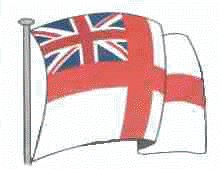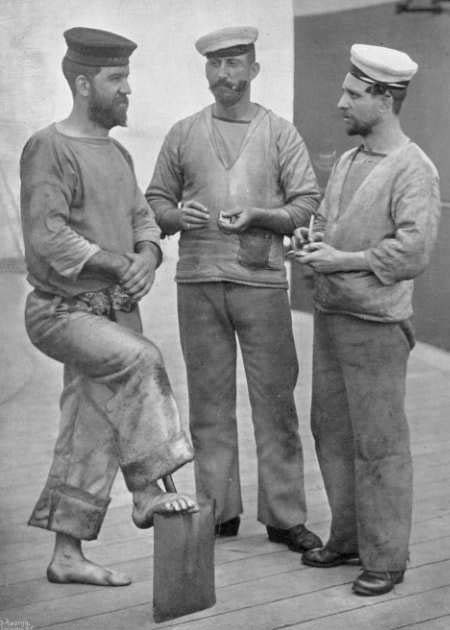
.

|
Daniel Wadhams was my second cousin, thrice removed. He was born in May 1862 into one of the largest families of fishermen and bargemen in Strood, Kent. Some indication of the size of this family can be gauged from the fact that, at the time of his enlistment as a Stoker in the Royal Navy in 1879, Daniel had some 90 brothers, sisters and cousins all living in the Chatham, Rochester and Strood area on the River Medway! He appears to have been the first of the Wadhams dynasty to have turned his back on a life of working the Medway in favour of the larger outside world. The fact that his Royal Navy service record gives his year of birth as several years earlier than it actually was suggests that he may have been keen enough to escape the confines of family life in Strood to have deliberately lied about his age in order to enlist! |
|
 |
What makes Daniel Wadhams' Navy career all the more interesting is that it spanned the period of the late 19th and early 20th centuries which saw the Royal Navy's transition from square rigged, wooden hulled ships-of-the-line to steam-powered, fully-armoured preDreadnought Class battleships. This evolutionary period of British naval architecture is amply illustrated by the wide variety of vessels upon which Daniel served, as shown below.
(left) A group of Royal Navy Stokers typical of the period during which Daniel Wadhams served. |
|
Of particular interest was Daniel Wadhams' service on HMS Polyphemus from 1890 to 1892. The Polyphemus Class was conceived by Admiral of the Fleet Sir George Rose Sartorius as the answer to the growing threat posed by small, light torpedo boats to British capital ships of the late 19th century. The Polyphemus was a low-freeboard 2,640 ton twin-screw Torpedo Ram ship whose only armament consisted of her bow ram and battery of forward-firing torpedo tubes. Her superior speed and ultra-low silhouette enabled her to hunt down the marauding attackers and sink them by means of ramming or by torpedo. The Polyphemus was the only ship of this unique class to have been constructed. Also of note was Daniel Wadhams' service aboard the steam-and-sail corvette, HMS Carysfort. He was a crew member in 1882 when the Carysfort took part in the landing of Royal Marines Light Infantry and Royal Navy Bluejackets at Ismailia, Egypt, in the aid of European residents who were under attack by Egyptian troops. In 1884 the ship's company was also heavily employed in punitive actions against the Dervishes along the Red Sea coast, and again in 1885 men from the Carysfort were involved in the attempt to regain control in the Sudan. Daniel Wadhams transferred to the Royal Fleet Reserve at Chatham, Kent, in 1901, and finally completed his naval service in 1910. |
Please click on the images below to enlarge
|
 |
HMS DUNCAN |
 |
HMS REPULSE |